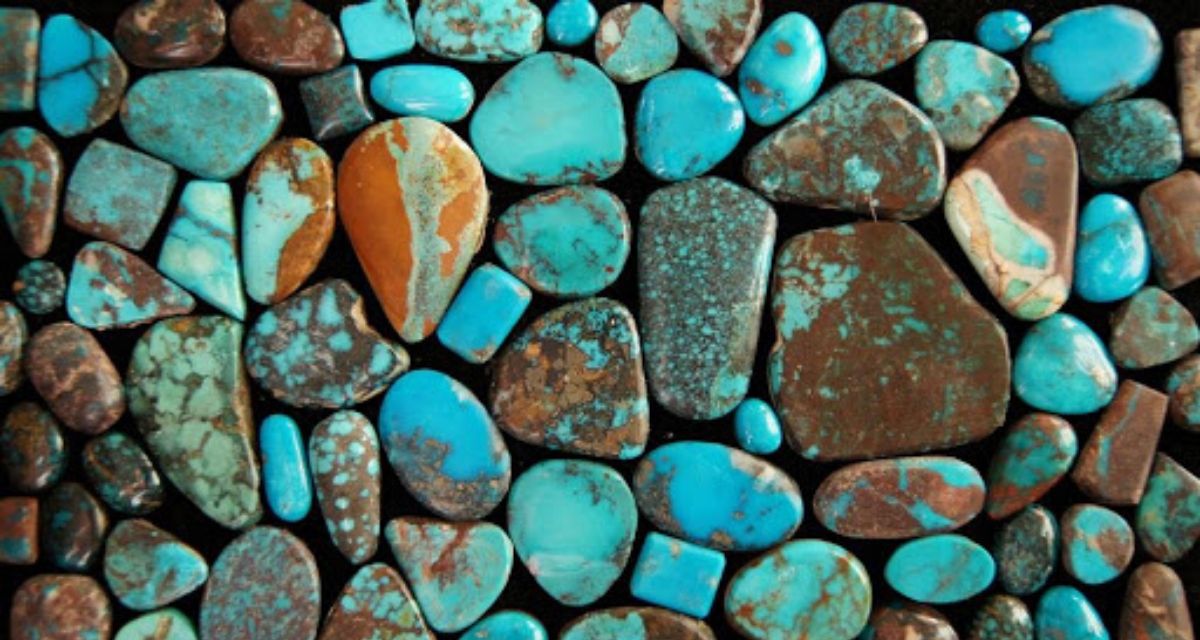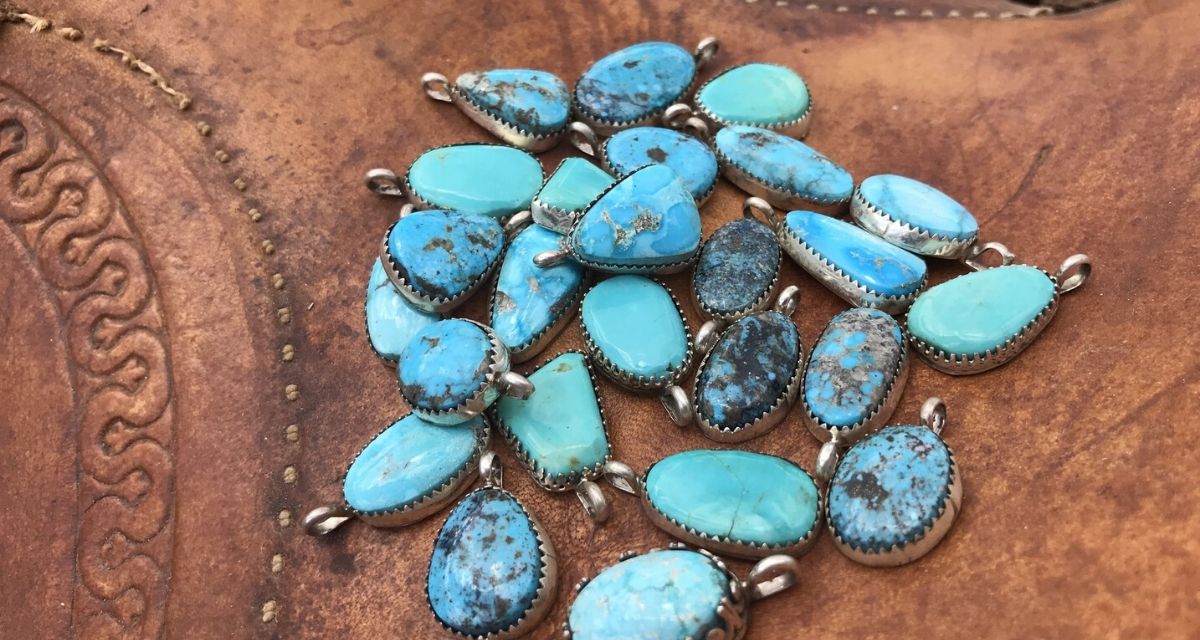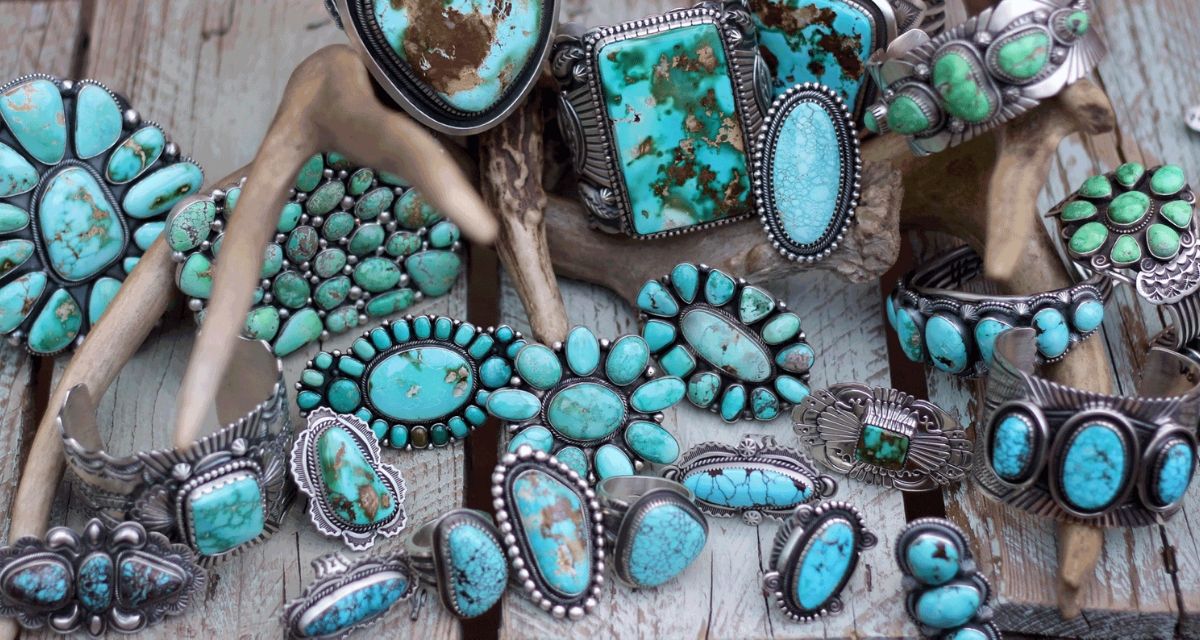
History of Navajo Turquoise
Known as the ‘stone of life,’ Navajo Turquoise holds great value and significance among the Navajo people, a Native American tribe from the Southeastern United States. Navajo has a special name for this beautiful stone, which they call “Doo tl’ izh ii”. The term means ‘turquoise,’ and it’s one of the most highly recognized elements in southwestern tribal jewelry. To add to the importance of this precious gemstone for the Navajo people, it’s worth knowing that they have a great history and are renowned for their silversmithing and the beautiful art of jewelry making. And needless to say, turquoise was one of the most prominent features of Navajo jewelry. But what is it about the turquoise stone and its great historical significance, especially for the people of Navajo?

Turquoise – The Stone of Life
Turquoise is one of the most alluring and gorgeous semi-precious stones, and even in today’s time, it is still prized and held very high in value due to its raw beauty and scarcity. It holds a great reputation for being the only “living” mineral mainly because of its fascinating color-changing abilities. This stone features a breathtaking blend of white, blue, and green, often coupled with hues of brown. This eccentric blend greatly represents the colors of the natural world and depicts feelings and sentiments like luck, happiness, and wealth for the Navajo people. But that’s not it; Turquoise has this rare ability to change its colors and display a variety of hues according to the surrounding environment and factors like dust and light. This ability to transform its appearance greatly intrigued the Navajo tribe, who then began to hold the stone in great reverence and began to consider it a sacred stone.

More Than Just a Stone
The tribe of Navajo didn’t just feature turquoise in their beautiful and iconic jewelry but began to associate it as a symbol for many things. The changing colors of the stone were seen as a way to determine the well-being of the wearer, as well as a means to restore vitality whenever it was needed. The Navajo people took the turquoise stone to be the bearer of good news and better fortune. The stone was hung from the ceilings of homes to keep the evil at bay. It was also stored in baskets and used in the exterior of graves and homes for that very reason. Tribes people would give it to others as gifts to represent kinship, and warriors would take it to the battlefield for great protection, good luck, and as a source of strength. Eventually, it was used in jewelry making to not just adorn the body of the wearer, but also to harness its power and aura in a convenient manner.

Rituals and Ceremonies
The importance of turquoise didn’t quite stop at jewelry making. It went on to be used in ceremonies and rituals. Many people from the tribe would cast a piece of this stone into a river, and while doing so, they would make a prayer to Neinilii, the God of rain. Not just that, but they would also throw turquoise pieces into the air when praying to the spirits of wind, thinking that the howling of the wind was actually the spirits who wanted the stone. Numerous centuries-old religious observances and ceremonies are still valued in the Navajo culture today, where the turquoise stone was greatly used and featured in those times.

Modern-Day Significance
The Navajo jewelry ultimately became the timeless, classic choice for people to complement their attire, whether casual or formal. Absolutely nothing compares to the raw, authentic Navajo jewelry in the modern-day and age. Most fashionistas wear turquoise with great grace and poise, which goes to show that perhaps stone will always be in style and will always be out there!

Last Updated on 08/11/2021 by Megan deFabry
CLN Community Sponsor









